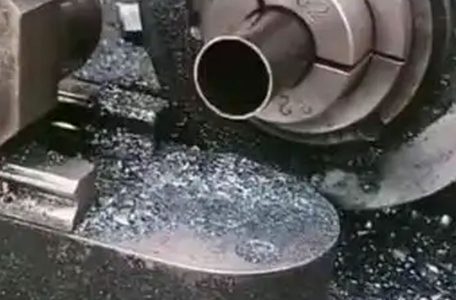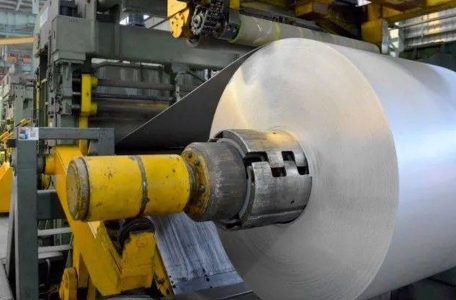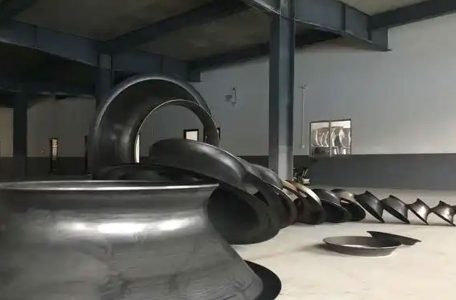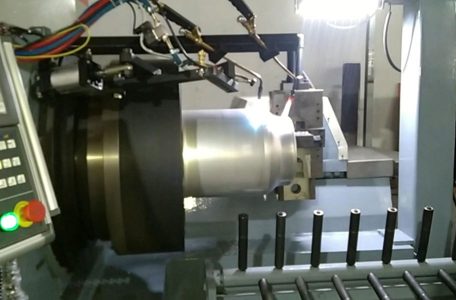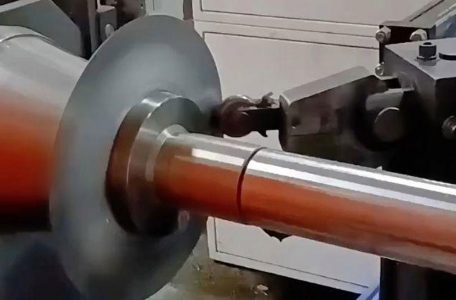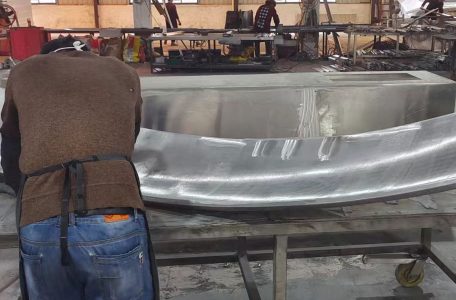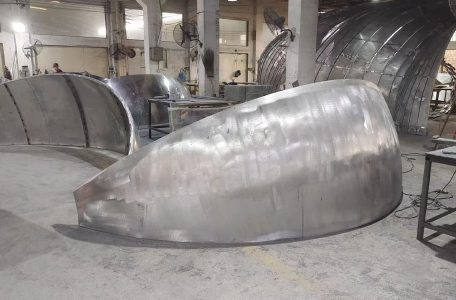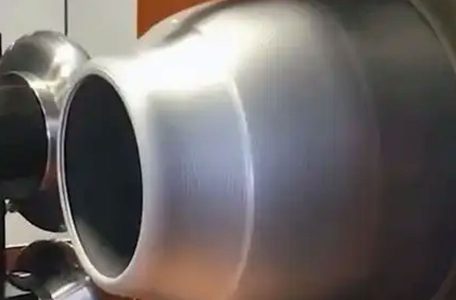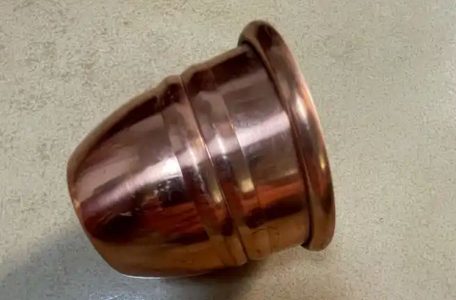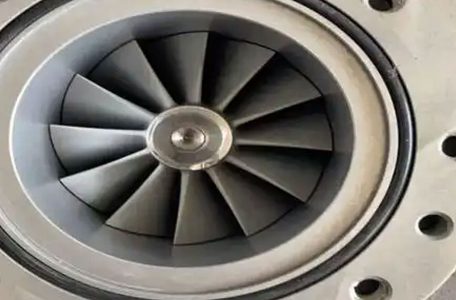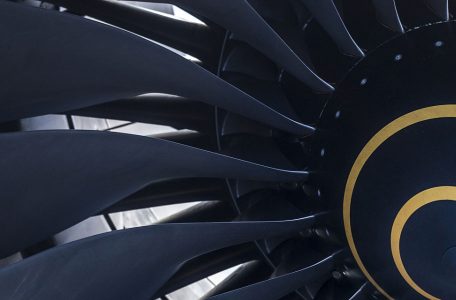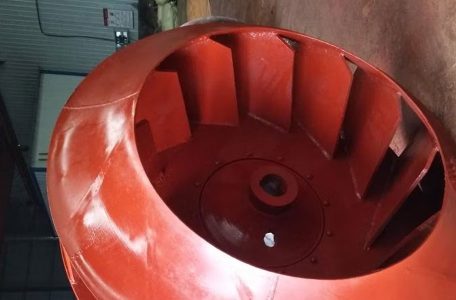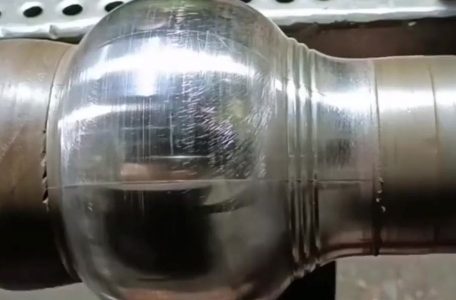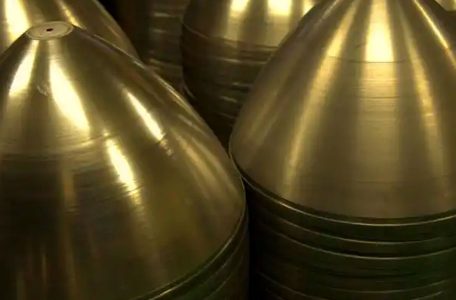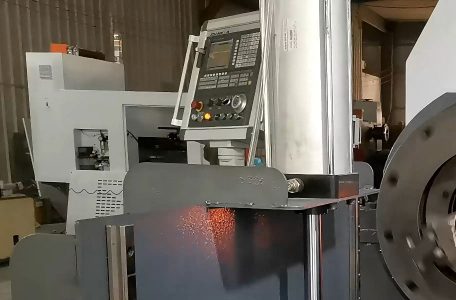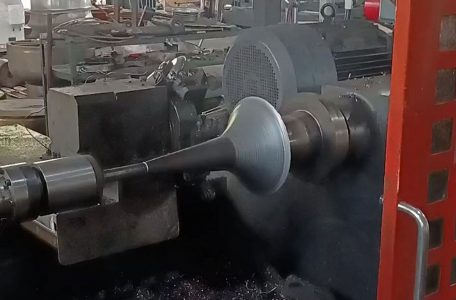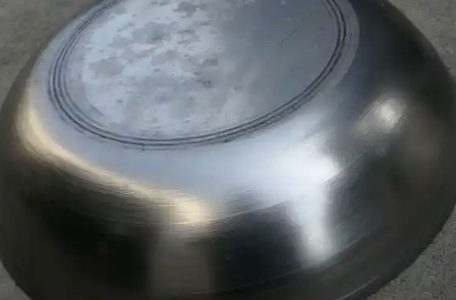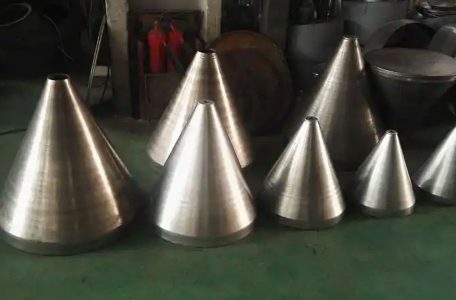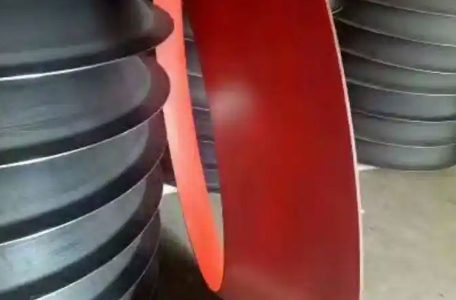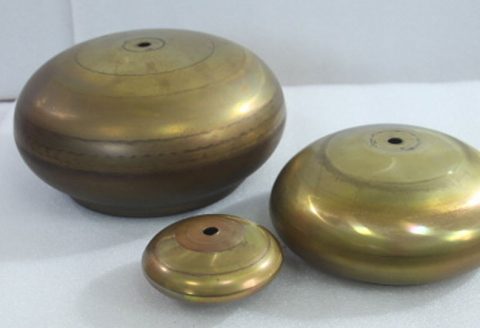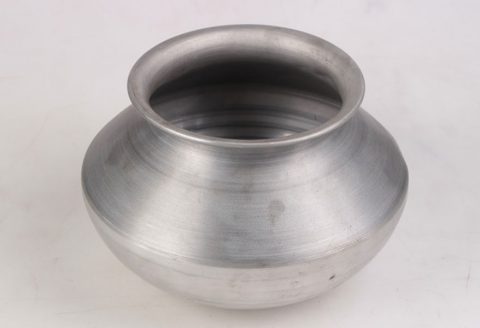High manganese (Mn) steels, characterized by their exceptional mechanical properties, have garnered significant attention in industries requiring materials with high strength, ductility, and toughness, particularly under extreme conditions such as cryogenic temperatures. These steels, often containing 15–30 wt% manganese, exhibit unique deformation mechanisms, including transformation-induced plasticity (TRIP) and twinning-induced plasticity (TWIP), which contribute to their remarkable performance. The ability of high manganese steels to maintain structural integrity and deformability in extreme low-temperature environments (below -150°C, or approximately 123 K) makes them ideal candidates for applications in liquefied natural gas (LNG) storage tanks, aerospace components, and polar infrastructure. This article comprehensively explores the spinning forming behavior and phase transformation strengthening mechanisms of high manganese steel under such extreme conditions, integrating insights Read more
Microstructure Refinement Mechanism and Plastic Strengthening Behavior of Nanocrystalline and Ultrafine-Grained Metal Materials during Large Spinning Deformation
Nanocrystalline (NC) and ultrafine-grained (UFG) metal materials, characterized by grain sizes typically below 100 nm and between 100 nm and 1 μm, respectively, have garnered significant attention in materials science due to their exceptional mechanical properties, including high strength, enhanced hardness, and, in some cases, improved ductility. These properties arise from their unique microstructures, which feature a high density of grain boundaries (GBs) and other lattice defects that profoundly influence deformation behavior. Large spinning deformation, a severe plastic deformation (SPD) technique, is a powerful method for processing bulk metallic materials to achieve NC and UFG microstructures. This article comprehensively explores the microstructure refinement mechanisms and plastic strengthening behavior of NC and UFG metals during large spinning deformation, emphasizing the interplay Read more
Topological Optimization Design of Aluminum Spinning Components under Extreme Load Conditions and Path Planning of Additive-Spinning Hybrid Manufacturing
Topological optimization (TO) and additive manufacturing (AM) have emerged as transformative approaches in modern engineering, particularly for designing and fabricating lightweight, high-performance components capable of withstanding extreme load conditions. Aluminum, valued for its high strength-to-weight ratio, corrosion resistance, and manufacturability, is a material of choice in industries such as aerospace, automotive, and biomedical engineering. When combined with spinning, a traditional metal-forming process, and additive manufacturing, a cutting-edge layer-by-layer fabrication technique, the design and production of aluminum components can achieve unprecedented levels of efficiency, performance, and complexity. This article explores the principles, methodologies, and applications of topological optimization for aluminum spinning components under extreme load conditions, alongside the path planning strategies for additive-spinning hybrid manufacturing. It delves into the theoretical foundations, Read more
Multi-Objective Spinning Path Design Based on Genetic Optimization: Minimizing Strain Rate Gradient and Wall Thickness Fluctuation
Metal spinning is a versatile manufacturing process used to produce axisymmetric components with high precision. The design of the spinning path significantly influences the quality of the final product, particularly in terms of strain rate distribution and wall thickness uniformity. This article explores the application of genetic optimization algorithms to achieve multiobjective spinning path design, focusing on minimizing strain rate gradients and wall thickness fluctuations. By leveraging the principles of evolutionary computation, this approach balances competing objectives to enhance process efficiency and product quality. The methodology, theoretical foundations, and practical implementations are discussed, supported by detailed mathematical formulations, simulation results, and comparative analyses. Introduction Metal spinning is a chipless forming process that shapes a rotating metal blank into an axisymmetric Read more
Mechanisms and Prediction Models for Stress-Induced Cracks in Crack-Free Spun Aluminum Alloy for High-End Medical Equipment Housing
Aluminum alloys are widely utilized in the manufacturing of high-end medical equipment housings due to their excellent combination of lightweight properties, corrosion resistance, and formability. The spin-forming process, a specialized metal-forming technique, is particularly valued for producing seamless, high-precision components with minimal defects, such as crack-free spun aluminum alloy housings. These housings are critical in medical applications, where structural integrity, biocompatibility, and aesthetic quality are paramount. However, despite the advantages of spin forming, stress-induced cracks can emerge during or after the forming process, compromising the functionality and reliability of the final product. Understanding the mechanisms behind stress-induced cracking and developing robust prediction models are essential for optimizing the manufacturing process and ensuring the durability of medical equipment housings. This article Read more
Residual Stress Distribution and Aging Stability Evolution in Aerospace-Grade Aluminum Alloys Post-Spinning
Aerospace-grade aluminum alloys, such as 2195 (Al-Cu-Li) and 2219 (Al-Cu), are pivotal in the fabrication of lightweight, high-strength components for aerospace applications, including rocket fuel tanks, aircraft envelopes, and structural panels. These alloys are prized for their exceptional mechanical properties, including high specific strength, excellent corrosion resistance, and good weldability. However, the manufacturing processes, particularly spinning, introduce complex residual stress distributions that can significantly affect the dimensional stability, mechanical performance, and long-term reliability of these components. Spinning, a metal-forming process involving the rotation of a workpiece against a tool to shape it, induces significant plastic deformation, leading to residual stresses that evolve during subsequent aging treatments. This article explores the residual stress distribution and aging stability evolution in 2195 and Read more
Dislocation Activity and Microcrack Initiation in Aluminum Grain Boundaries under High-Frequency Dynamic Spinning
Aluminum and its alloys are widely used in aerospace, automotive, and manufacturing industries due to their favorable strength-to-weight ratio, corrosion resistance, and formability. However, under high-frequency dynamic spinning—a process involving rapid rotational deformation at frequencies typically exceeding 100 Hz—the mechanical behavior of aluminum, particularly at the microstructural level, becomes complex. This complexity arises from the interactions between dislocations and grain boundaries, which can lead to microcrack initiation and influence the material’s fatigue life and structural integrity. Understanding these phenomena is critical for optimizing the performance of aluminum components subjected to dynamic loading conditions, such as those found in high-speed rotating machinery, turbine blades, and advanced manufacturing processes like spin forming. This article explores the dislocation activity and microcrack initiation behavior Read more
Asymmetric Load Modeling and Reverse Die Design Technology for Special-Shaped Cross-Section Aluminum Spinning Components
Metal spinning is a versatile manufacturing process used to create seamless, hollow components by rotating a metal blank and applying localized force to shape it over a mandrel or tool. Traditionally, this process has been limited to axisymmetric (rotationally symmetric) geometries due to the constraints of mandrel-based forming and uniform load distribution. However, recent advancements in computer numerical control (CNC) technology, finite element modeling (FEM), and innovative die design methodologies have expanded the capabilities of metal spinning to include special-shaped cross-section components—non-cylindrical geometries with asymmetric features. These advancements have necessitated the development of sophisticated techniques for asymmetric load modeling and reverse die design, which are critical for achieving high precision, minimizing material waste, and optimizing the mechanical properties of spun Read more
Mechanisms for Improving Fatigue Performance of Aluminum Spinning Parts under Equivalent Strain Control
Aluminum spinning, a metal-forming process used to create axisymmetric components, is widely employed in industries such as aerospace, automotive, and manufacturing due to the material’s lightweight properties, high strength-to-weight ratio, and excellent corrosion resistance. Spinning involves rotating a metal blank or tube on a mandrel while applying localized pressure with a roller to form complex shapes, such as cylindrical or conical parts. However, the cyclic loading experienced by these components in service often leads to fatigue failure, a critical concern in applications requiring high durability and reliability. Fatigue, defined as the progressive and localized structural damage that occurs when a material is subjected to cyclic loading, is a primary cause of failure in aluminum spinning parts, particularly in high-performance environments. Read more
Construction of Key Process Parameter Window for Hot Spinning of Superplastic Aluminum Alloy
Hot spinning is a versatile metal-forming process that involves the deformation of a rotating metal workpiece, typically a plate or tube, by applying localized pressure with a roller tool against a mandrel or forming die. When applied to superplastic aluminum alloys, hot spinning leverages the unique ability of these materials to exhibit exceptional ductility under specific temperature and strain rate conditions, enabling the fabrication of complex, lightweight components with high precision. Superplastic aluminum alloys, characterized by fine-grained microstructures and high strain rate sensitivity, are particularly suited for industries such as aerospace, automotive, and rail transit, where intricate geometries and lightweight structures are critical. The construction of a key process parameter window for hot spinning of superplastic aluminum alloys is a Read more
Exploration of a New Process for Aluminum Spinning Based on Additive Preforms in Hybrid Manufacturing
Aluminum spinning, a metal forming process that involves rotating a metal disc or tube on a lathe to shape it into axially symmetric components, has been a cornerstone of manufacturing for producing lightweight, high-strength parts used in industries such as aerospace, automotive, and defense. The process is valued for its ability to create seamless, complex geometries with minimal material waste. However, traditional aluminum spinning faces challenges, including limitations in achieving intricate internal features, high material costs for complex preforms, and the need for multiple processing steps to achieve desired tolerances and surface finishes. The advent of additive manufacturing (AM), often referred to as 3D printing, has introduced new possibilities for enhancing traditional manufacturing techniques. AM enables the layer-by-layer deposition of Read more
How to Use Metal Spinning for Crafting Satisfying Pie Tins
Metal spinning, also known as spin forming or spinning, is a metalworking process by which a flat metal disc or tube is rotated at high speed and formed into an axially symmetric shape using a combination of rotational force and pressure from tools. This technique, rooted in ancient craftsmanship yet refined by modern technology, is particularly well-suited for creating objects such as pie tins, which require both aesthetic appeal and functional precision. The process is valued for its ability to produce seamless, lightweight, and durable metal components with a smooth finish, making it an ideal choice for crafting pie tins that are both practical for baking and visually satisfying for artisanal or decorative purposes. This article provides a comprehensive exploration Read more
Metal Spun Spheres: Versatile and Cost-Effective Manufacturing
Metal spinning, also known as spin forming or metal turning, is a metalworking process used to create axially symmetric parts, including spheres, hemispheres, and other rounded geometries. Metal spun spheres, in particular, have emerged as a cornerstone in various industries due to their versatility, cost-effectiveness, and ability to meet stringent performance requirements. This article explores the technical, economic, and practical aspects of metal spun spheres, detailing their manufacturing process, material properties, applications, and advantages over alternative forming methods. By leveraging advanced engineering principles and modern manufacturing technologies, metal spun spheres offer a compelling solution for industries ranging from aerospace to decorative arts. 1. Introduction to Metal Spinning Metal spinning is a cold-forming process that involves rotating a metal disc or Read more
Unveiling the Power of Axial Flow Fan Manufacturing Solutions
Axial flow fans, characterized by their ability to move air parallel to the axis of rotation, are critical components in a wide range of industrial, commercial, and residential applications. These fans, often referred to as propeller fans, tube-axial fans, or vane-axial fans, are designed to handle large volumes of air at relatively low pressures, making them indispensable in systems requiring efficient ventilation, cooling, and air circulation. From heating, ventilation, and air conditioning (HVAC) systems to industrial process cooling, power generation, and electronics thermal management, axial flow fans play a pivotal role in maintaining optimal operating conditions and enhancing system performance. The manufacturing of axial flow fans has evolved significantly over the past century, driven by advancements in materials science, aerodynamic Read more
When You Need Seamless Products, Turn to Metal Spinning
Metal spinning, also known as spin forming or metal turning, is a metalworking process that transforms flat sheet metal or tubular blanks into seamless, axially symmetric components through a combination of rotational motion and localized force. This ancient technique, with origins tracing back to Ancient Egypt, has evolved into a sophisticated manufacturing method widely utilized across industries such as aerospace, automotive, medical, and consumer goods. The hallmark of metal spinning is its ability to produce seamless products—components without welds or joints—that offer superior structural integrity, enhanced mechanical properties, and versatility in design. Seamless products are critical in applications where high internal or external pressures, corrosion resistance, or aesthetic precision are paramount. This article explores the mechanics, applications, advantages, and recent Read more
How to Process Industrial Centrifugal Fans Housing
Industrial centrifugal fans are critical components in a wide range of applications, from HVAC systems to heavy-duty industrial processes such as cement production, power generation, and chemical manufacturing. The housing of a centrifugal fan, often referred to as the scroll or volute, plays a pivotal role in directing airflow, managing pressure, and ensuring operational efficiency. Processing the housing involves a complex interplay of material selection, design optimization, manufacturing techniques, and quality assurance. This article provides a comprehensive, scientifically grounded exploration of the processes involved in designing, fabricating, and testing industrial centrifugal fan housings, with a focus on achieving high performance, durability, and compliance with industry standards. Overview of Centrifugal Fan Housings Centrifugal fan housings are structural enclosures that encase the Read more
What Is Centrifugal Blower Fan Impeller
A centrifugal blower fan impeller is a critical rotating component within centrifugal blower systems, designed to impart kinetic energy to air or gas, facilitating its movement through ducts, chambers, or industrial processes. Often referred to simply as an impeller, this mechanical device is central to the operation of centrifugal fans, which are widely used in applications such as HVAC systems, industrial ventilation, combustion air supply, and material handling. The impeller’s design, material, and operational characteristics significantly influence the blower’s efficiency, performance, and durability. This article provides a comprehensive exploration of centrifugal blower fan impellers, covering their history, design principles, types, materials, manufacturing processes, performance metrics, applications, and future trends. Historical Context The development of centrifugal blowers and their impellers traces Read more
Regulation Mechanism of Stress Distribution in CNC Spinning of Conical Components
Computer Numerical Control (CNC) spinning is a sophisticated metal forming process that leverages automated machinery to shape metal sheets or tubes into axisymmetric components through localized plastic deformation. This technique, an evolution of traditional manual spinning, employs programmable machine tools to achieve high precision, repeatability, and efficiency. CNC spinning is particularly valued in industries such as aerospace, automotive, and energy for producing complex geometries like conical components, which are characterized by their tapered, axisymmetric profiles. These components are integral to applications ranging from rocket nozzles and satellite dishes to exhaust cones and pressure vessel heads, where structural integrity and dimensional accuracy are paramount. Conical components, due to their geometry, pose unique challenges in manufacturing. The tapering profile induces non-uniform stress Read more
Application of Smart Sensors and the Internet of Things in the Spinning Industry
The spinning industry, a cornerstone of textile manufacturing, transforms raw fibers into yarns through complex mechanical processes. With the advent of Industry 4.0, the integration of smart sensors and the Internet of Things (IoT) has revolutionized this sector, enhancing efficiency, quality, and sustainability. Smart sensors, characterized by their ability to collect, process, and transmit data autonomously, combined with IoT’s networked connectivity, enable real-time monitoring, predictive maintenance, and data-driven decision-making. This article explores the multifaceted applications of these technologies in the spinning industry, detailing their technical underpinnings, operational impacts, and future potential. It examines their role in process optimization, quality control, energy management, supply chain integration, and worker safety, supported by comparative tables and case studies. Historical Context and Technological Evolution Read more
Effect of Lubricant Type on Friction and Forming Effect in Spinning Process
The spinning process, a subset of metal forming techniques, involves the gradual deformation of a rotating metal blank or preform into a desired shape, typically axisymmetric, using a roller or tool that applies localized pressure. This process is widely utilized in industries such as aerospace, automotive, and consumer goods manufacturing for producing components like pressure vessels, wheel rims, and cookware. Central to the efficacy of the spinning process is the management of friction at the interface between the tool and the workpiece, as well as the resulting forming effects, which dictate the quality, precision, and efficiency of the final product. Lubricants play a critical role in modulating friction, influencing material flow, surface quality, tool wear, and energy consumption during spinning. Read more
Comparative Study of Forming Quality in High-Speed Spinning and Conventional Spinning
Metal spinning, a versatile sheet metal forming process, involves rotating a metal blank or tube at high speed while applying localized pressure to shape it over a mandrel or form. This technique, rooted in ancient craftsmanship, has evolved into a sophisticated manufacturing method used across industries such as aerospace, automotive, and consumer goods. Two primary approaches dominate modern metal spinning: conventional spinning and high-speed spinning. Conventional spinning relies on gradual, often manual or semi-automated deformation, while high-speed spinning leverages advanced machinery, higher rotational speeds, and optimized process parameters to enhance productivity and precision. This article provides a comprehensive comparative study of the forming quality of these two methods, analyzing their mechanics, process parameters, material behavior, and outcomes. Detailed tables and Read more
Effect of the Gap Between the Spinning Wheel and the Die on Forming Force in Metal Spinning
Metal spinning, also known as spin forming or metal turning, is a metalworking process that involves rotating a metal disc or tube at high speed to form axially symmetric parts. This chipless forming technique, which dates back to ancient civilizations such as Egypt and China, has evolved into a sophisticated manufacturing method widely used in industries ranging from aerospace to automotive and consumer goods. The process typically employs a lathe, where a metal blank is clamped against a mandrel (or die) and shaped by a spinning wheel or roller that applies localized force to deform the material over the die. The quality, efficiency, and mechanical properties of the spun part depend on several process parameters, including the mandrel speed, feed Read more
Control Methods for Springback Phenomenon in Metal Spinning
Metal spinning, a versatile sheet metal forming process, is widely employed in industries such as aerospace, automotive, and manufacturing to produce axisymmetric components with high precision and complex geometries. The process involves rotating a metal blank or preform at high speed while a forming tool, typically a roller, applies localized pressure to deform the material against a mandrel, shaping it into the desired form. Despite its advantages, including flexibility, low tooling costs, and the ability to form lightweight, high-strength components, metal spinning is challenged by the springback phenomenon—a critical issue that affects dimensional accuracy and product quality. Springback refers to the elastic recovery of a material after the removal of forming forces, resulting in a deviation from the intended shape. Read more
Design and Application of Multi-Point Contact Spinning Wheel in Spinning Process
The spinning wheel, a cornerstone of textile production for centuries, has undergone significant evolution since its inception, likely in the Middle East or India around the 11th century. From its rudimentary forms to modern mechanized iterations, the spinning wheel has been pivotal in transforming raw fibers into yarn, a process fundamental to the textile industry. Among the myriad advancements in spinning technology, the development of the multi-point contact spinning wheel represents a significant leap forward, particularly in enhancing efficiency, yarn quality, and adaptability to diverse fiber types. This article delves into the design principles, mechanical intricacies, and practical applications of the multi-point contact spinning wheel in the spinning process, exploring its historical context, technical innovations, and impact on modern textile Read more
Spinning in the Manufacturing of High-Speed Rail Parts
Spinning, also known as spin forming or metal spinning, is a metalworking process used to form axially symmetric parts by rotating a metal blank or tube at high speed while applying localized pressure with a tool. This technique has been employed for centuries in various industries, from aerospace to automotive, and has gained significant traction in the manufacturing of high-speed rail (HSR) components due to its precision, cost-effectiveness, and ability to produce lightweight, high-strength parts. In the context of high-speed rail, spinning is critical for fabricating components such as wheelsets, axles, and structural elements that must withstand extreme dynamic loads, high speeds, and stringent safety requirements. High-speed rail systems, defined as rail transport networks with trains operating at speeds exceeding Read more
Spinning in the Nuclear Industry
The nuclear industry, encompassing both fission and fusion technologies, relies on a multitude of physical and engineering principles to harness energy from atomic nuclei. Among these, the concept of “spinning” plays a surprisingly multifaceted role, with applications ranging from the microscopic behavior of nuclear spins to macroscopic mechanical spinning in centrifuge technologies. In the context of nuclear science, spinning refers to both the intrinsic angular momentum of subatomic particles (nuclear spin) and the physical rotation of mechanical systems used in processes like uranium enrichment or reactor component testing. These applications are critical to the efficiency, safety, and advancement of nuclear technologies, influencing everything from fuel production to waste management and experimental research. This article explores the special applications of spinning Read more
Comparison of Cold Working and Hot Working in Metal Spinning
Metal spinning, also known as spin forming or metal turning, is a metalworking process used to form axially symmetric parts by rotating a metal blank or tube at high speed while applying localized pressure with a tool to shape it against a mandrel. This technique is widely employed in industries such as aerospace, automotive, and consumer goods manufacturing to produce components like cookware, lighting fixtures, and rocket nose cones. The process can be performed under different thermal conditions, primarily categorized as cold working and hot working, each imparting distinct mechanical, structural, and economic outcomes to the final product. This article provides a comprehensive comparison of cold working and hot working in metal spinning, exploring their definitions, processes, material behaviors, applications, Read more
Application of Spinning in Aircraft Engine Parts
Spinning, a metalworking process involving the deformation of a rotating metal blank or preform over a mandrel, has emerged as a critical manufacturing technique in the aerospace industry, particularly for the production of aircraft engine components. This process, often referred to as metal spinning or spin forming, allows for the creation of seamless, axisymmetric parts with high precision, structural integrity, and material efficiency. In the context of aircraft engines, spinning is employed to fabricate components such as compressor and turbine disks, fan blades, combustor liners, and exhaust nozzles, which must withstand extreme temperatures, pressures, and mechanical stresses. The application of spinning in aircraft engine manufacturing represents a confluence of advanced materials science, precision engineering, and aerodynamic design, contributing to the Read more
Application of Spinning in Metal Sculpture Art
Metal spinning, also known as spin forming or metal turning, is a metalworking process by which a flat metal disc or tube is rotated at high speed and formed into an axially symmetric part using tools. This technique, rooted in ancient craftsmanship, has evolved into a sophisticated method employed in various industries, including aerospace, automotive, and notably, the creation of metal sculpture art. In the context of sculpture, metal spinning offers artists a unique ability to craft intricate, seamless, and symmetrical forms that are both aesthetically compelling and structurally robust. This article explores the historical development, technical principles, artistic applications, and contemporary innovations of metal spinning in metal sculpture art, delving into its cultural significance, material considerations, and comparative advantages Read more
Flexible Mold Technology in Spinning Processing
Flexible mold technology in spinning processing represents a transformative approach in the field of metal forming, enabling the production of complex, high-precision components with enhanced efficiency and adaptability. Spinning, a metalworking process that forms sheet metal or tubular blanks into rotationally symmetric or asymmetric shapes, has evolved significantly with the integration of flexible mold systems. Unlike traditional rigid molds, flexible molds allow for rapid reconfiguration, reduced setup times, and the ability to produce small-batch, customized parts economically. This article provides a comprehensive exploration of flexible mold technology in spinning processing, covering its principles, historical development, technical advancements, applications, challenges, and future prospects. Through detailed analysis and comparative tables, it aims to elucidate the scientific and industrial significance of this innovative Read more
